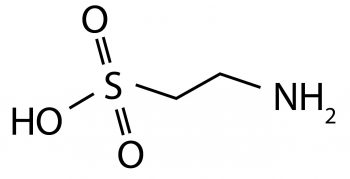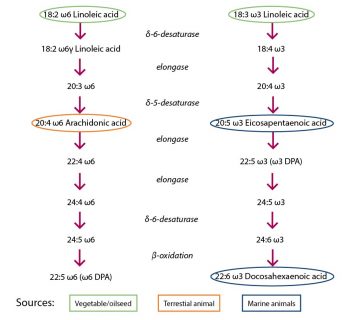29 Jan 2018
Cecilia Villaverde discusses the essentiality of nutrients for dogs and cats, and their role in providing healthy energy requirements.

Image: Роман Самсонов / Adobe Stock
Dogs and cats require nutrients and energy from their diet to sustain life.

Nutrients can be classified by their essentiality, where an essential nutrient is one that fulfils two characteristics: it has an important organic function and has to be provided by the diet. Non-essential nutrients can also have important functions, but can be obtained via synthesis from precursors. For example, glucose – a very important and necessary nutrient – is not considered essential because it can be synthesised from amino acids and other substances.
Nutrient essentiality varies with species and life-stage. For example, taurine is essential in cats, but not dogs (the latter can synthesise it from its precursors methionine and cysteine) and the omega-3 fatty acid docosahexaenoic acid (DHA) is considered essential in puppies, but in adults is still unclear.
Nutrients can be classified as macronutrients and micronutrients, depending on the amounts provided by the diet (Figure 1). Macronutrients – protein, fat and carbohydrates – are provided in large amounts (grams per kilograms) and provide the bulk of the diet, whereas micronutrients (vitamins and minerals) are provided in milligrams or even micrograms per kilograms. Macronutrients are also the nutrients that provide energy. At the moment we have minimum requirements (and sometimes recommended maximum levels) for these nutrients for both dogs and cats1. However, discussion is ongoing about the best macronutrient profile for our pets, especially in relation with their preferences and the diet they have evolved eating.
Several studies have been performed in dogs and cats to try to tease if they self-select a specific macronutrient combination if they are able. For dogs, initial studies2 performed with dry and canned food suggested they preferred to choose a diet with 30% protein, 63% fat and 7% carbohydrates on a metabolisable energy (ME) basis (that is, percentage of calories coming from each macronutrient).
Another study3, with a higher macronutrient and energy range, showed, initially, dogs chose higher fat diets, but as days went by, fat intake decreased, while protein intake remained constant. Therefore, the percentage of ME coming from protein went from 29% to 44%, whereas fat went from 68% to 52%, with carbohydrate intake being very low. The authors suggest dogs still show a “feast or famine” attitude to feeding, where fatty (energy dense) foodstuffs are prioritised initially.

In cats, self-selection studies in domestic research cats4 suggest their preferred macronutrient intake is 52, 36 and 12 for protein, fat and carbohydrates, respectively. This can be compared to feral cat’s typical prey5,6. Prey is variable and depends on the geographic location of the cat, but it is usually high in protein and low in carbohydrates (Figure 2).
Ongoing discussion relates to these self-selection studies, and it is difficult to tease out the effect of preference or palatability (which does not necessarily reflect the “goodness” of a nutrient) from any purely nutritional reason for self-selection.
Prey analysis studies are interesting as a way to show what dog and cat ancestors or related species have evolved eating, but this might reflect what is available rather than what is optimal, and feral felines and canines have issues with malnutrition, parasitism and short life spans. However, many diets in the market use the “as nature intended” or “evolutionary correct” claim to suggest such a diet is healthier and more adequate for pet dogs and cats.
Protein provides both energy and amino acids, and has important functions in the body (such as structural, hormonal and enzymatic) and in the diet (such as palatability and texture provision).
Amino acids from the diet can be essential or non-essential, with the essential ones being arginine, leucine, isoleucine, valine, methionine, phenylalanine, threonine, tryptophan, histidine, lysine and, for cats, also taurine. Taurine is special in the sense it is not technically an amino acid (rather a beta sulphonic acid; Figure 3) and it does not form part of proteins.
In humans, it is estimated 1g of protein provides 4kcal of metabolisable energy. For pet food, which is slightly less digestible, this value is 3.5kcal/g1.

According to the National Research Council (NRC1), protein minimum requirements for dogs and cats are 2.62g/kg0.75 and 3.97g/kg0.67, respectively (equivalent to 8% and 16% dry matter). The recommended allowance (which adds a safety margin) is 3.28g/kg0.75 (10% dry matter) and 4.96g/kg0.67 (20% dry matter) for dogs and cats, respectively. Industry guidelines in Europe7 recommend commercial diets for dogs and cats provide at least 18% and 25% dry matter for dogs and cats, respectively (and even higher for populations with low energy needs), which is equivalent to 20% ME in dogs and 22% ME in cats.
In cats, these described requirements are lower than the prey studies suggest cats eat in the wild, which has given rise to the controversy about commercial diets being protein deficient for these species. However, commercial diets from reputable companies provide substantially above these minimums and no studies exist to suggest these diets are deficient if consumed in adequate amounts8.
Different protein sources have different amino acid profiles, and the formulator needs to combine the ingredients properly to ensure the requirements of each specific essential amino acid are met. Vegetable protein sources can be very useful, but meeting amino acid requirements is more challenging without any animal protein sources9, so it is important to ensure any company making vegetarian diets for dogs is assessed in depth (the WSAVA has some guidelines to assess pet food companies via http://bit.ly/1orZd5N).
Protein for healthy dogs and cats has no described safe upper limit1. That said, no storage exists for this nutrient, and any protein provided in excess of the daily requirements will undergo catabolism, where the nitrogen will be converted to urea for excretion and the amino acid carbon chain will be converted either to glucose and glycogen, or to fatty acids for energy storage.
Protein is a valuable resource, and the use of protein sources in pet food must be done responsibly, minimising competition with humans and ensuring the protein sources used are available in the necessary amounts now and in the future. Research on alternative protein sources is underway both in the human and the veterinary nutrition world to help minimise the negative impact of feeding the population on the environment.
Fat, similarly to protein, provides both energy and essential nutrients (fatty acids)1. Fatty acids, the basic structure in important lipid molecules (such as triglycerides and phospholipids), can be classified according to the number of double bonds: none (saturated), one (monounsaturated) and more than one (polyunsaturated).
Polyunsaturated fatty acids (PUFA) can be further classified, depending on the location of the first double-bound counting from the methyl end, into omega-3, omega-6 and omega-9 PUFA. While dogs and cats can synthesise saturated, monounsaturated and omega-9 PUFA, they cannot synthesise omega-3 or omega-6 PUFA, thus, the latter are considered essential.
The omega-3 and omega-6 precursors are the 18 carbon alpha linolenic and linoleic fatty acids, respectively. These can be further elongated and desaturated in the body to create other important omega-3 and omega-6 fatty acids (Figure 4). Conversion of precursors to more bioactive fatty acids is low in dogs and very low in cats, since this species has a very low activity of the enzyme delta-6 desaturase10. Both families share the same enzymes and compete for them, which is why attention is paid not only to the total amount of omega-3 and omega-6 in the diet, but also to their ratio, although no defined ideal ratio for dogs and cats exists at this point.

Other important functions of fat in the body include thermoregulation, organ protection, and energy storage, and, in the diet, they are important drivers of palatability and promote energy density.
In dogs, recommended allowances for total fat and linoleic acid (omega-6) according to the NRC1 are 5.5% and 1.1% dry matter. In cats, these values are 9% and 0.55% dry matter. The industry recommendations7 are very close to these values. Total fat provided by commercial diets, however, is much higher than these allowances, since it is a palatable and concentrated source of energy with beneficial technological properties as well.
For omega-3 fatty acids, these are not considered essential in the same way as the omega-6 fatty acids in adult animals, but they are essential for reproduction and growth, specifically eicosapentaenoic acid. However, the NRC1 recommends diets either provide the precursor (alpha-linolenic acid) or the longer chain omega-3 fatty acids (eicosapentaenoic and docosahexaenoic acids) in both feline and canine diets, due to their potentially positive effects on inflammation and other functions.
The NRC describes a safe upper limit for total fat in dogs (33% dry matter) due to the risk for pancreatitis with very high-fat diets. It also provides a precautionary safe upper limit for both linoleic acid and eicosapentaenoic and docosahexaenoic acids. This is similar in cats, although the total fat safe upper limit (33% dry matter) relates to the risk of relative protein deficiency with such a high-fat diet.
Digestible carbohydrates and fibre are not considered essential for dogs and cats; however, they are commonly included in their diets. Digestible carbohydrates are an affordable source of energy that allows formulating diets with a moderate energy density and moderate in fat. Moreover, starch is important for kibble formation during extrusion.
The inclusion of carbohydrate in the diet of cats has also given rise to objections, as starch is not a common nutrient consumed by feral cats, their ancestors or other felines. Moreover, carbohydrate is metabolised differently in the cat – a strict carnivore – than in the dog. For example8, cats have lower amounts of pancreatic amylase compared to dogs, low glucokinase activity in their liver and do not metabolise fructose. That said, cats are perfectly able to digest starch if properly cooked and fed in appropriate amounts12.
High carbohydrate diets have not been associated with obesity or a higher risk of diabetes mellitus or other diseases8. At this point, no evidence exists to suggest the inclusion of carbohydrates in diets for cats is deleterious for them as long as the processing and amounts are controlled, and all the essential nutrients are provided in a bioavailable manner and sufficient amounts.
Fibre has many uses in feline and canine diets11 and many patients require some for proper gastrointestinal function. Fermentable fibre provides energy sources for the bacteria in the gut, which will result in volatile fatty acid synthesis and these fatty acids are nutrients for the intestinal cells.
Insoluble fibre provides bulk to the faeces and stimulates peristalsis, and some soluble fibres can soften faeces – both can help constipated cats. The best type and amount of fibre varies individually.